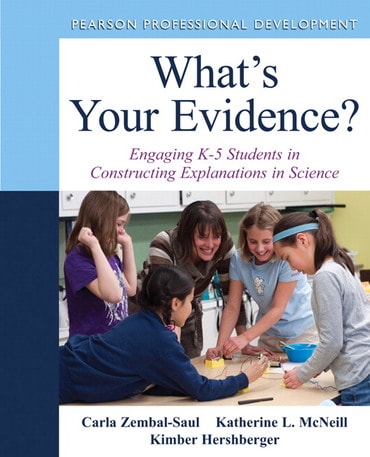Switch content of the page by the Role togglethe content would be changed according to the role
What's Your Evidence?: Engaging K-5 Children in Constructing Explanations in Science, 1st edition
Published by Pearson (February 14, 2012) © 2013
- Carla L. Zembal-Saul
- Katherine L. McNeill
- Kimber Hershberger
eTextbook
$49.99
$51.99
Need help? Get in touch

Digital Learning NOW
Extend your professional development and meet your students where they are with free weekly Digital Learning NOW webinars. Attend live, watch on-demand, or listen at your leisure to expand your teaching strategies. Earn digital professional development badges for attending a live session.

